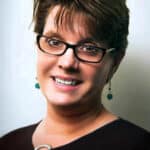Six months after the federal government announced a new phone number for the Suicide Prevention Hotline, rural communities are preparing themselves for what the real launch of the number will mean later this year.
In July 2022, the federal government launched 988 — a hotline for people experiencing a mental health crisis to connect with professionals and services that can help them. At the outset, critics worried that the number wouldn’t help residents in communities, many in rural areas, that don’t have access to mental health services.
- SUBSCRIBE: Sign up for our newsletters
This summer the number will have a “hard launch” — meaning a bigger advertising push with the weight of the federal government behind it. And officials said they are working to make sure it will provide added help to rural residents in crisis.
The year-long rollout of the new number gives states time to prepare for the increase in calls, Cheryl Witt, project director for Raising Hope, a Kentucky organization working to help farmers with their mental health needs, told the Daily Yonder. She said operators need to be trained on how to talk to farmers and others in rural communities.
When 988 rolled out, Kentucky saw an increase in calls.
Susan Dunlap, executive director of the Office of Public Affairs within the Kentucky Cabinet for Health and Family Services, said in an email interview that crisis prevention call centers received about 11,500 calls for the first half of 2022, because the 988 launch. After launch, calls climbed to about 14,100 for the second half of the year, excluding the last two weeks of December. The state anticipates that by June 2023 calls to the hotline will quadruple.
The new three-digit number will make it easier for people in rural communities to access crisis intervention, Jeff Winton, founder and chairman of Rural Minds, a Maryville, New York, non-\profit dedicated to helping rural residents with their mental health issues, told the Daily Yonder.
“Mental illness and substance use disorder in rural areas have been growing exponentially even before Covid hit,” he said. “It’s not seen as an illness. It’s seen as a character flaw. It’s seen as something you should be able to just pull yourself up by your bootstraps and get over … And until such time that we get people to consider it an illness, we’re going to be hamstrung and this epidemic is going to continue to grow.”
As important as the new number is, Winton said, the people on the other end of those phone lines need to be easy for rural residents to talk to. He has stressed to federal organizers the importance of training call operators on communicating with rural residents. Those trained individuals may be the lifeline rural residents need in times of trouble.
“We’re hoping that over time, all of those operators who are taking calls in states that may not be as rural focused as others will have some rural sensitivity training so that at least they understand the difference between getting a call from somebody in downtown Chicago and from somebody in a town of 200 people in the middle of Kansas,” he said.
“I think for people that live in rural areas, (the 988 number) is a definite plus because it’s that one person that can listen to you and that can provide you with other resources without having that person end up sitting next to you at church, knowing that you’ve reached out for help.”
Winton knows first-hand the importance of the hotline. It could have saved his nephew, he said.
Winton’s nephew, Brooks, was a happy, gregarious, larger-than-life 28-year-old who took his own life after his older brother’s wedding.
Brooks’ family decided they were not going to let the stigma of mental illness and suicide dictate how they talked about the death in their rural community, Winton said.
“We had a lot of people in the community who said, ‘Well you’re not gonna talk about this, right? You’re going to say he died of a heart attack or say he was in a farm accident, right?’” he said. “And my mother… said, ‘We are going to talk about it and we’re going to talk about it in detail, because this has been going on for too long in this community. Enough is enough, we’ve got to start facing what is happening here.’”
The rural attitudes toward mental illness, he said, need to change as much as the mental health hotline phone number.
The hotline is just one of many resources available to rural residents with mental health issues, said Witt, the project director at Raising Hope.
“The goal is prevention,” Witt said. “We want to also focus on recognizing there is a need and getting more rural healthcare providers and mental health providers in rural areas. We don’t want it to get to a crisis.”
Cre Larson, executive director for First Call for Help of Itasca County, Minnesota, told the Daily Yonder that since the initial announcement, phone centers in rural areas don’t just help rural residents, and rural residents won’t necessarily be calling rural call centers.
As part of the 988 system, calls are routed based on the area code of the phone number someone is calling from. For instance, if someone is living in rural Minnesota, but their cellphone number has a South Carolina area code, the 988 call they make using their cell phone would be routed to a call center in South Carolina. It’s not an uncommon occurrence to handle out-of-state calls, Larson said.
“We had someone call from a Koochiching County number … but they had retired and were in Arizona,” Larson said. “When she dialed her phone, it rang to us … We don’t know the resources (in Arizona) by heart, but we still do the work — we assess, we stabilize them on the phone and we intervene in crisis, then we connect them to resources in their area.”
This article first appeared on The Daily Yonder and is republished here under a Creative Commons license.






